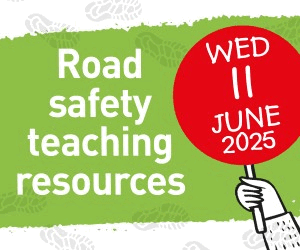Primary Times - the definitive what’s on and where to go family guide of activities and events for children of primary school age. Things to do with your kids during the school holidays including arts and craft activities, music and theatre for children, parties, competitions, days out, and family attractions along with term time drama schools, dance classes, after school clubs and sports activities. Things to do at a place near you!
Enjoy the sun safely - be SunSmart SunWise!
Enjoy the sun safely - be SunSmart SunWise!
There’s all sorts of advice about how to protect ourselves and our children to harmful sun rays. We are advised by NHS and Cancer Research that any exposure to the sun for any length of time we should use a minimum sun screen of factor (SPF) 15 or above, but you could use a stronger (SPF) 30, especially for children. Children aged under 6 months are advised to be kept out of direct strong sunlight.
SPF stands for Sun Protection Factor and is a measure of the amount of ultraviolet B radiation (UVB) protection. Sunscreens with higher factors don’t provide much more protection against UVB radiation. For example, an SPF15 sunscreen filters out 93% of UVB radiation and SPF30 sunscreen filters out 96%.
From March/April to the end of September, the sun has the added benefit of helping our bodies to create vitamin D. We need vitamin D to help keep our bones, teeth and muscles healthy. Vitamin D is also found in certain food types such as oily fish (Salmon, Sardines, Herring and Mackerel), red meat, liver, egg yolks, fortified foods such as fat spreads and some breakfast cereals. If you are following a strict vegetarian or vegan diet and not eating fish then fortified fat spreads, breakfast cereals and unsweetened soya drinks (with vitamin D added) gives you vitamin D. The Department of Health recommends that we all take a vitamin D supplement. Guidance for children aged 1 to 4 years old is that they should be given a daily supplement containing 10mcg of vitamin D, children aged 1-10 years should not have more than 50mcg a day. Further information can be found here
.jpg)
5 top sun safety tips to help you enjoy your time outdoors and be sun wise during March – October with children.
- Aim to spend time in the shade between 11am – 3pm
- Use a sun protection factor (SPF) of 15 or above, even on cloudy overcast days. Don’t forget their shoulders, backs of necks, nose, ears, cheeks and their feet.
- Don’t apply sunscreen too thinly as the protection will be less, reapply often throughout the day. The most common areas to get sunburnt are shoulders and backs.
- Cover up with suitable clothing, try to get your children to use sunglasses and wear a floppy hat. Sunglasses should meet the British Standard (BSEN 1836:2005) and carry the "CE" mark – check the label.
- If they are swimming or jumping in and out of the water it is advised that you use a waterproof sunscreen of at least (SPF) factor 15 or above and don’t forget to reapply after towelling.

It is important to take extra care to protect children’s skin. Their skin is more sensitive than adult skin and repeated sunlight exposure could increase their risk of skin cancer developing in later life. Sunburn is also a very painful experience and can ruin a day out or holiday. The NHS website has lots of information on how to be sun safe, they even have a video demonstrating how to apply sun lotion.
Protect your child’s skin, protect their future – slap on the sunscreen and be SunSmart SunWise!





